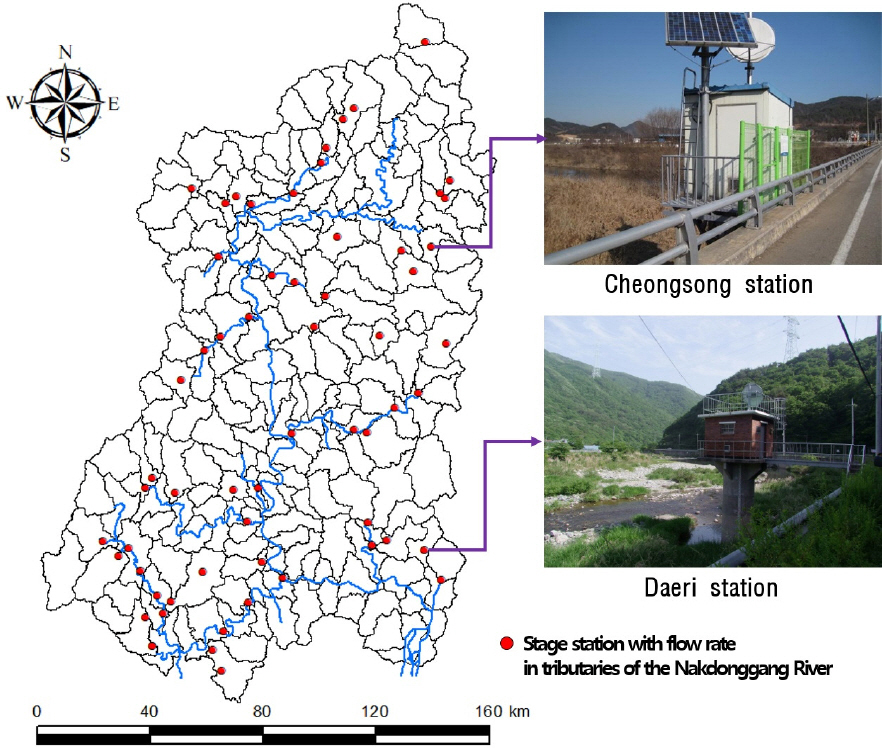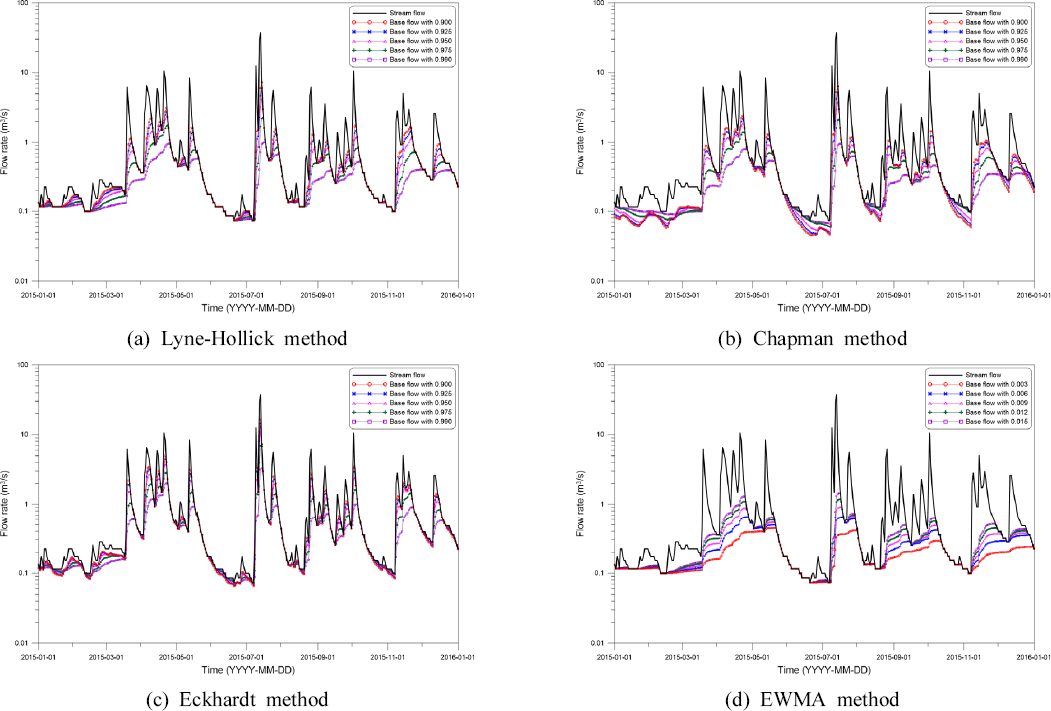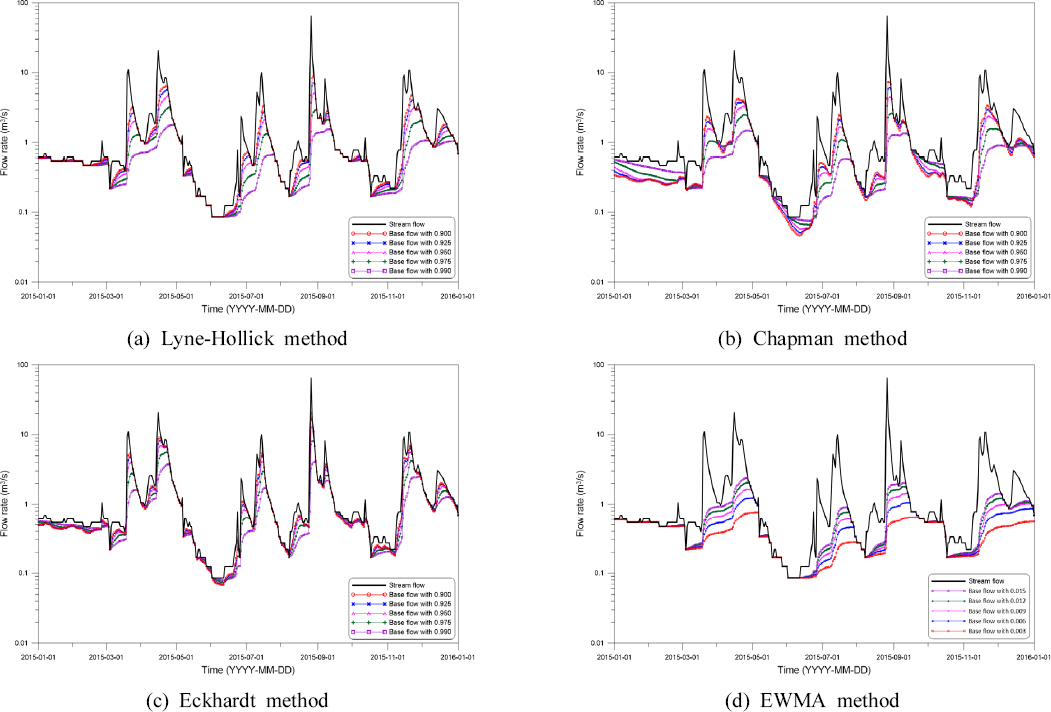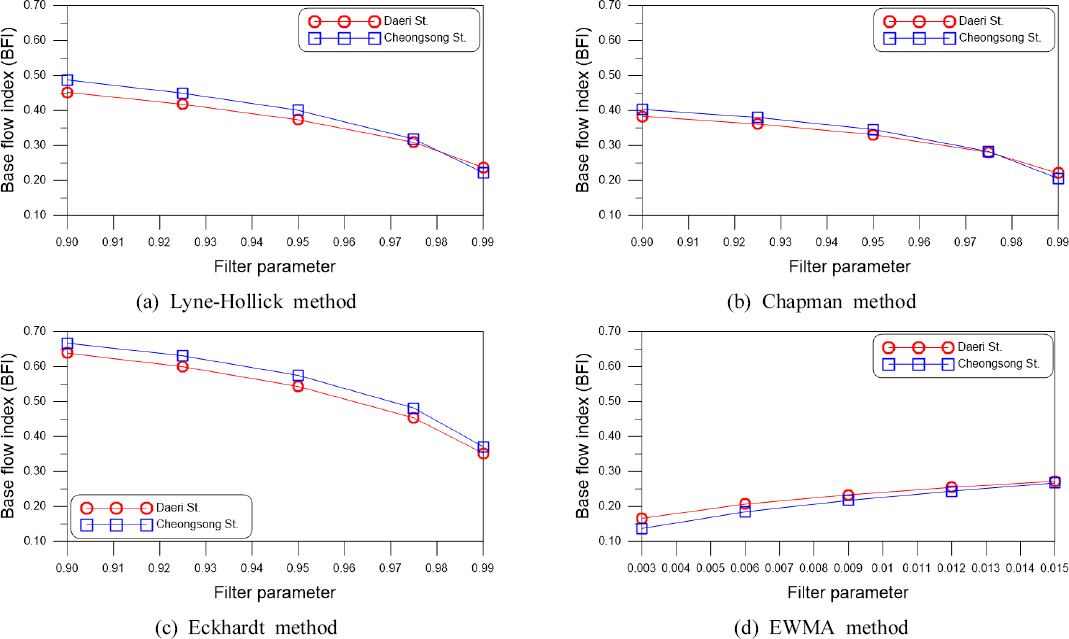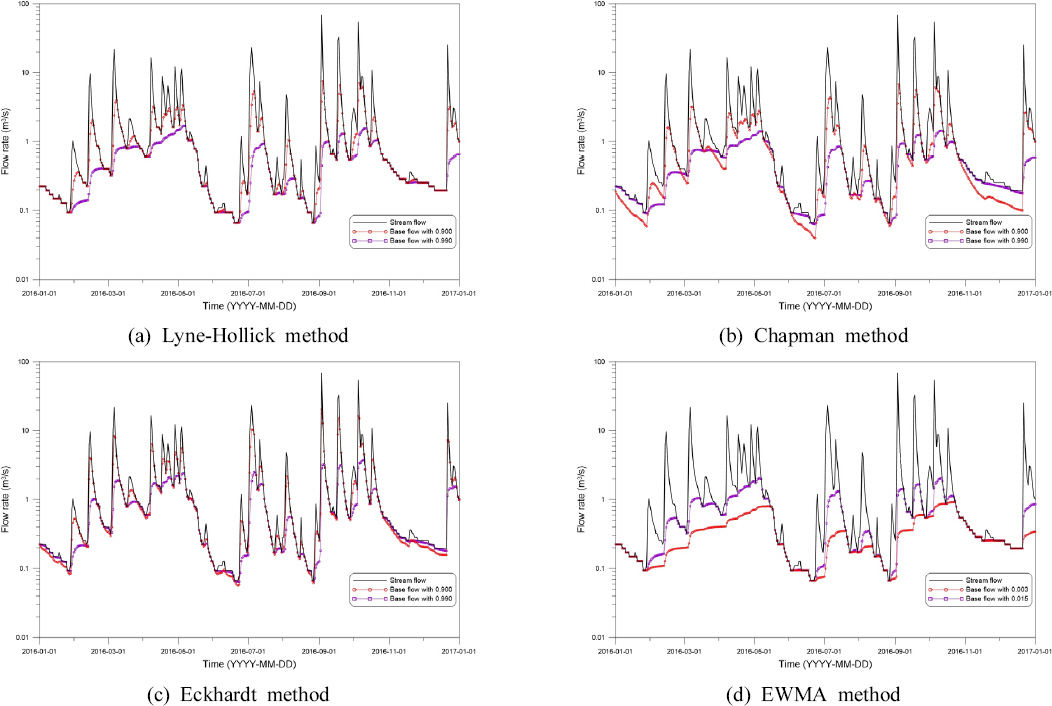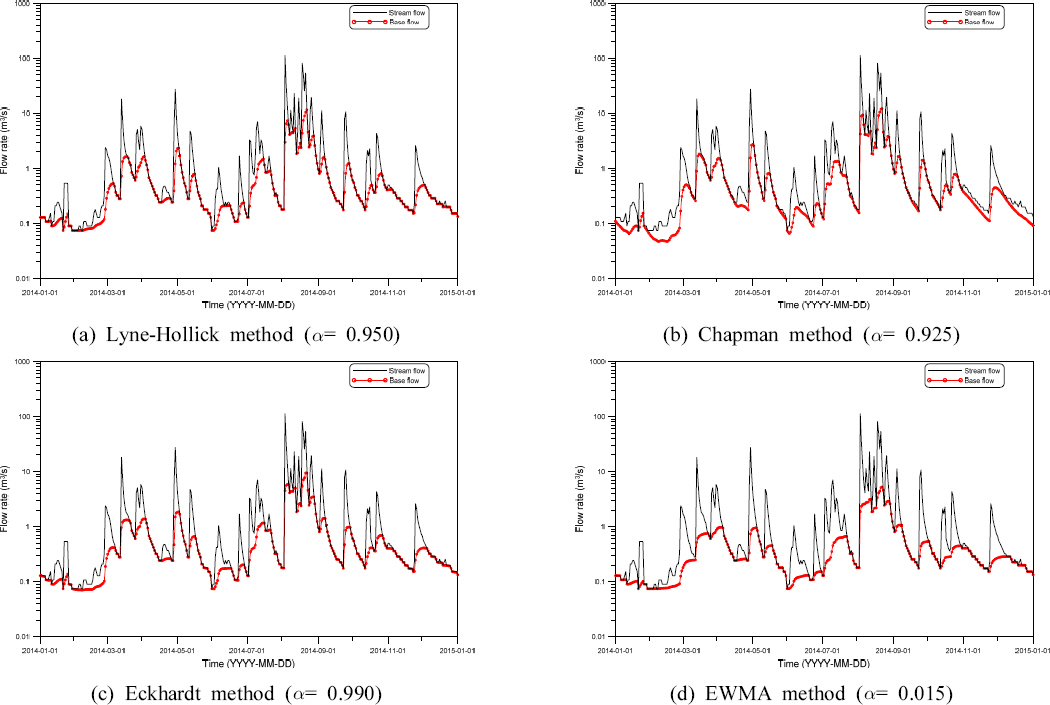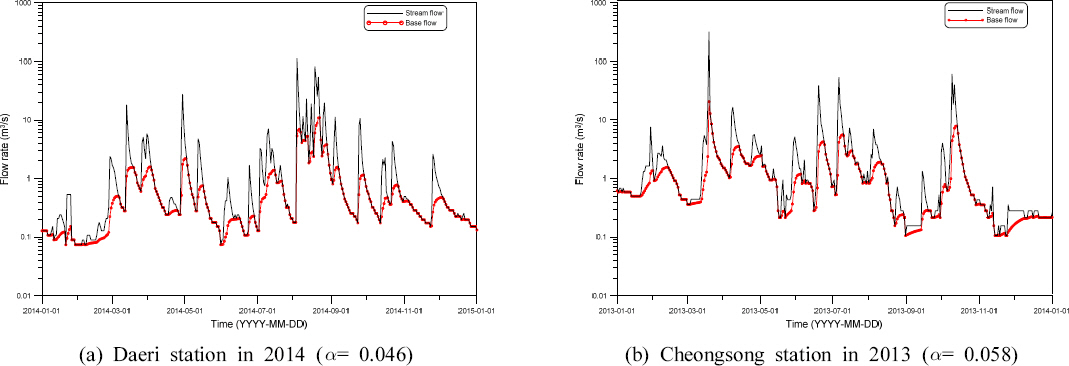1. Arnold, J.G, and Allen, P.M (1999) Automated methods for estimating baseflow and ground water recharge from streamflow records.
Journal of the American Water Resources Association, Vol. 35, No. 2, pp. 411-424.

2. Chapman, T.G (1991) Comment on “evaluation of automated techniques for baseflow and recession analyses”by R.J. Nathan and T.A. McMahon.
Water Resources Research, Vol. 27, No. 7, pp. 1783-1784.


3. Chapman, T.G, and Maxwell, A.I (1996) Baseflow separation-comparison of numerical methods with tracer experiments. In Institute Engineers Australia National Conference, Institute of Engineers, Canberra, Australia, Vol. 5, pp. 539-545.
4. Eckhardt, K (2005) How to construct recursive digital filters for baseflow separation.
Hydrological Processes, Vol. 19, No. 2, pp. 507-515.

5. Eckhardt, K (2008) A comparison of baseflow indices, which were calculated with seven different baseflow separation methods.
Journal of Hydrology, Vol. 352, pp. 168-173.

6. Han, J.H, Lim, K.J, and Jung, Y (2016) A study on relationship between streamflow variability and baseflow contribution in Nakdong River Basin.
Journal of the Korean Society of Agricultural Engineers, Vol. 58, No. 1, pp. 27-38.

7. Hong, J, Lim, K.J, Shin, Y, and Jung, Y (2015) Quantifying contribution of direct runoff and baseflow to rivers in Han River System, South Korea.
Journal of Korea Water Resources Association, Vol. 48, No. 4, pp. 309-319.

8. Indarto, I, Novita, E, and Wahyuningsih, S (2016) Preliminary study on baseflow separation at watersheds in East Java regions.
Agriculture and Agricultural Science Procedia, Vol. 9, pp. 538-550.

9. Jung, Y, Shin, Y, Won, N.I, and Lim, K.J (2016) Web-based BFlow system for the assessment of streamflow characteristics at national level.
Water, Vol. 8, No. 9, pp. 384.

10. Kang, H, Hyun, Y.J, and Jun, S.M (2019) Regional estimation of baseflow index in Korea and analysis of baseflow effects according to urbanization. Journal of Korea Water Resources Association, Vol. 52, No. 2, pp. 97-105.
11. Kang, H.S, Hyun, Y.J, and Jeon, S.M (2015) Study on the development and implementation of baseflow index for the management of groundwater dependent ecosystems. 2015-12. Korea Environment Institute, pp. 7.
12. Kang, T, and Lee, N (2021) Case study on application of graphical method for baseflow separation. Journal of Korea Water Resources Association, Vol. 54, No. 4, pp. 217-227.
13. Liu, Z, Liu, S, Ye, J, Sheng, F, You, K, Xiong, X, and Lai, G (2019) Application of a digital filter method to separate baseflow in the small watershed of Pengchongjian in Southern China.
Forests, Vol. 10, No. 12, pp. 1065.

14. Lott, D.A, and Stewart, M.T (2016) Base flow separation:a comparison of analytical and mass balance methods.
Journal of Hydrology, Vol. 535, pp. 525-533.

15. Lyne, V, and Hollick, M (1979) Stochastic time-variable rainfall-runoff modelling. Institute of Engineers Australia National Conference, Australia, Perth, Vol. 79, No. 10, pp. 89-92.
16. Ministry of Environment (2015) The 2nd master plan for water environment management. 11-1480000-001483-14.
17. Tularam, G.A, and Ilahee, M (2008) Exponential smoothing method of baseflow separation and its impact on continuous loss estimates.
American Journal of Environmental Sciences, Vol. 4, No. 2, pp. 136-144.

18. Valent, P, and Bulík, M (2016) The selection of an appropriate baseflow separation method:a case study from Jaloveckýcreek. W:HydroCarpath, Catchment Processes in Regional Hydrology.
19. Xie, J, Liu, X, Wang, K, Yang, T, Liang, K, and Liu, C (2020) Evaluation of typical methods for baseflow separation in the contiguous United States.
Journal of Hydrology, Vol. 583, pp. 124628.

20. Yoon, T.H (2014) Hydrology (1st ed.). Goomibook.




